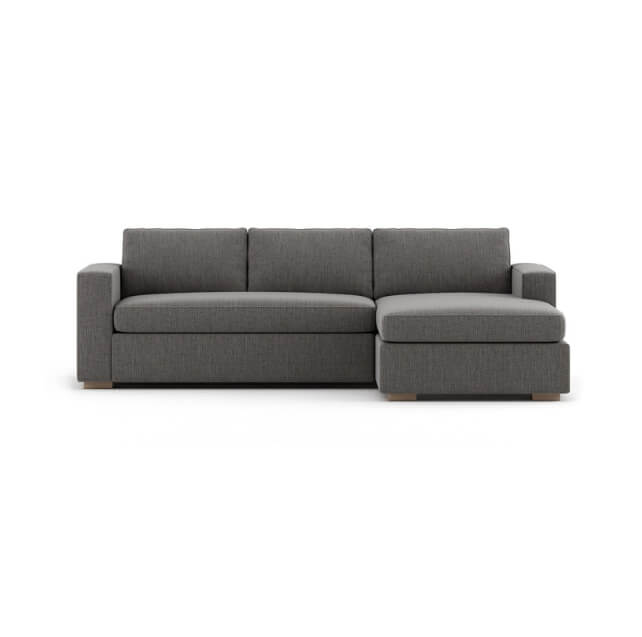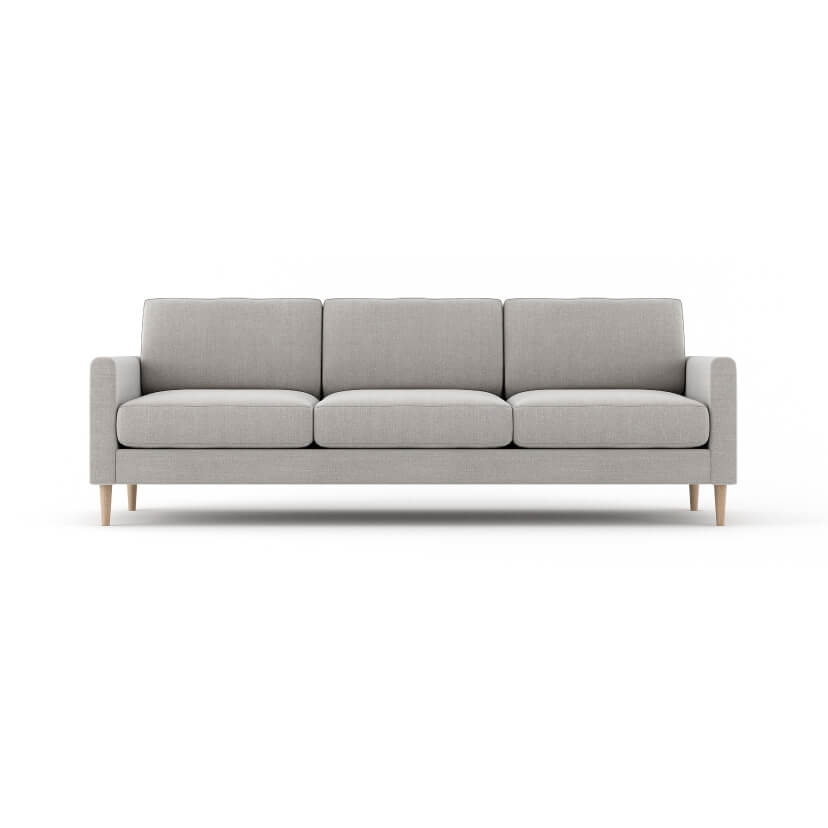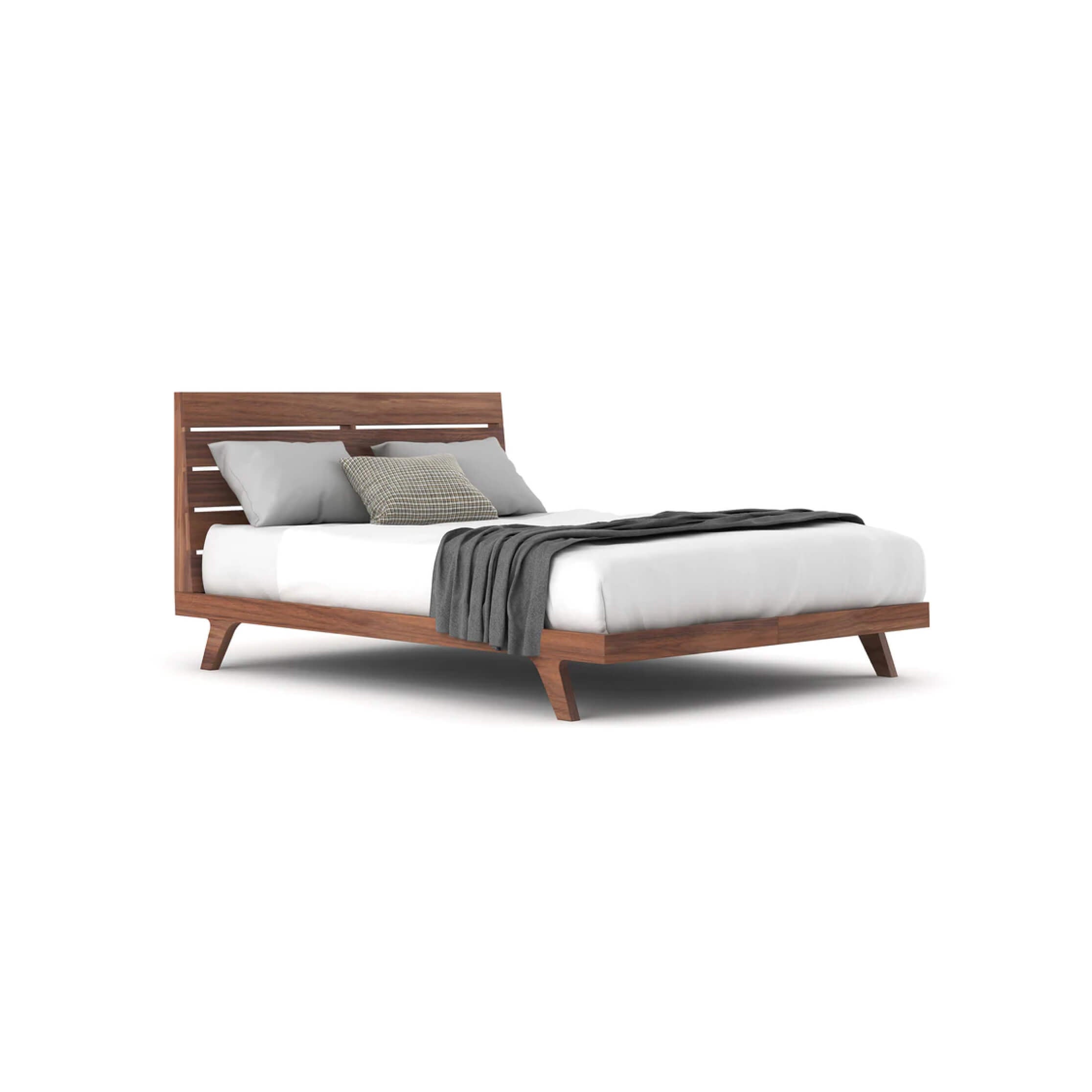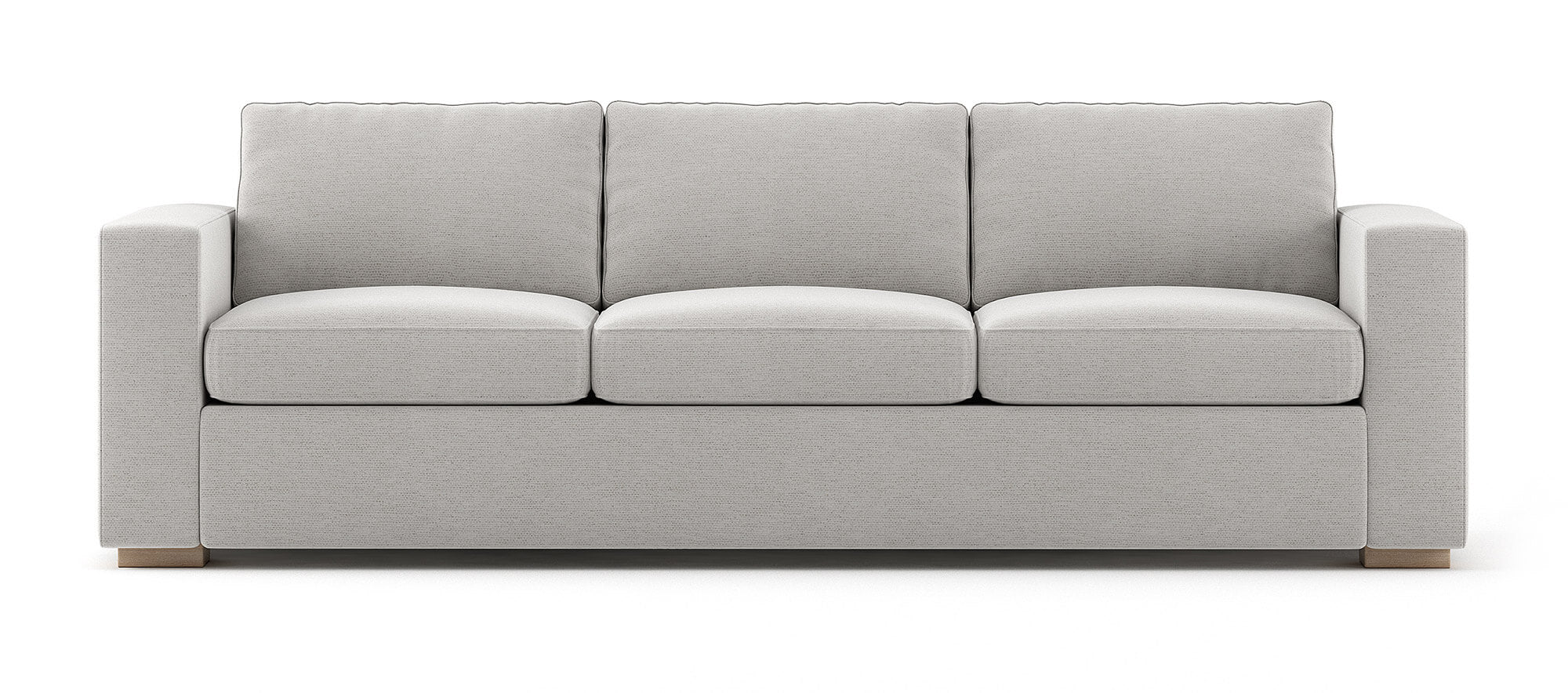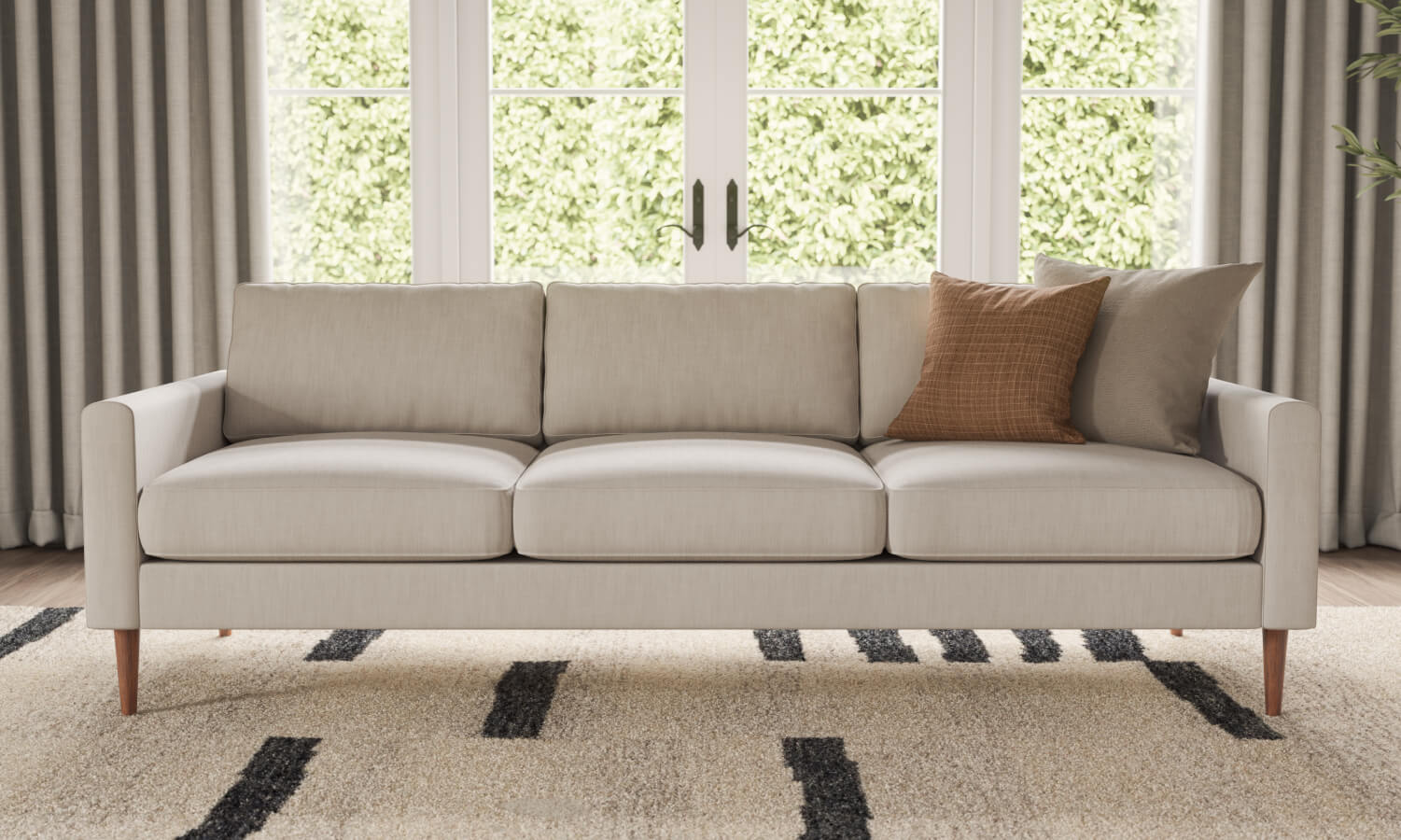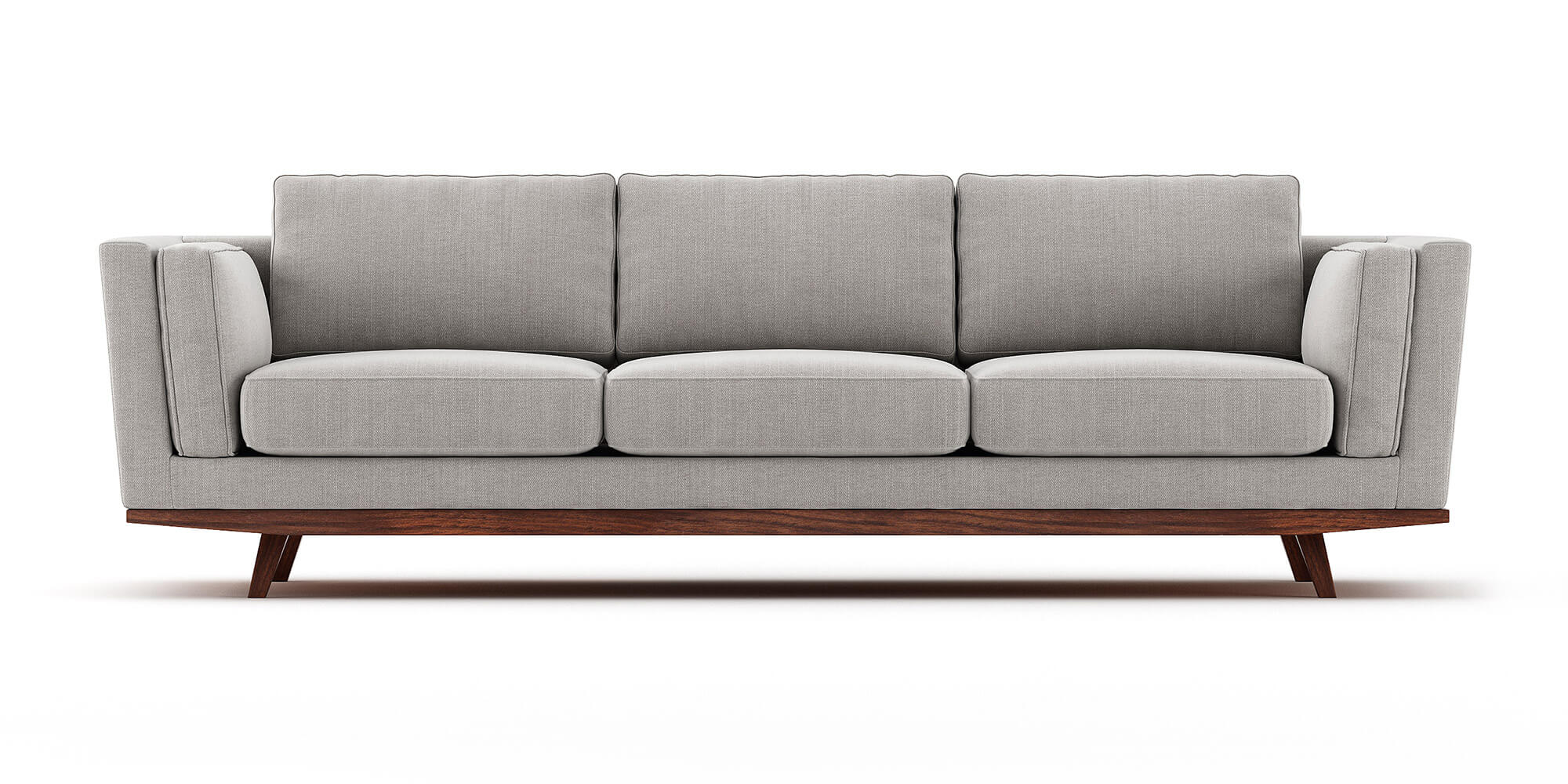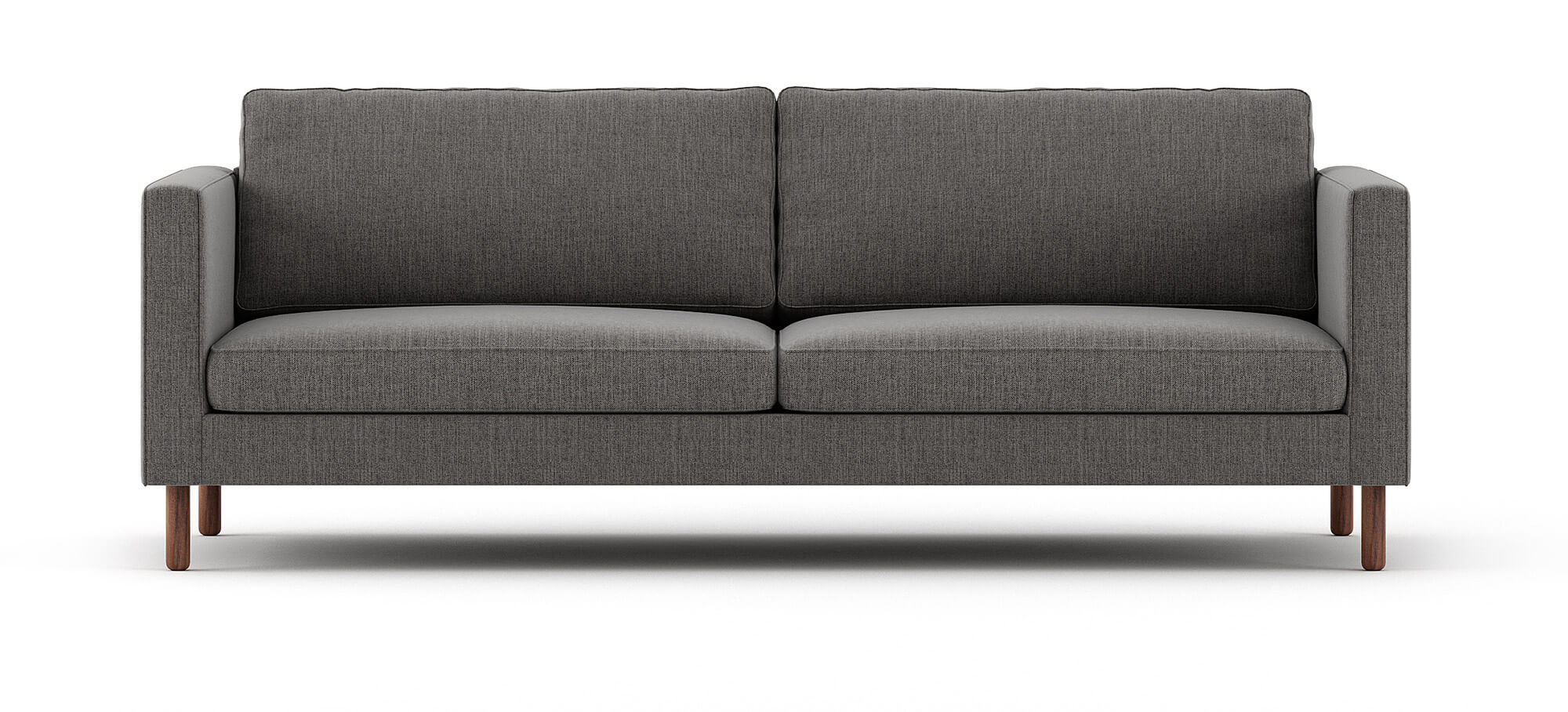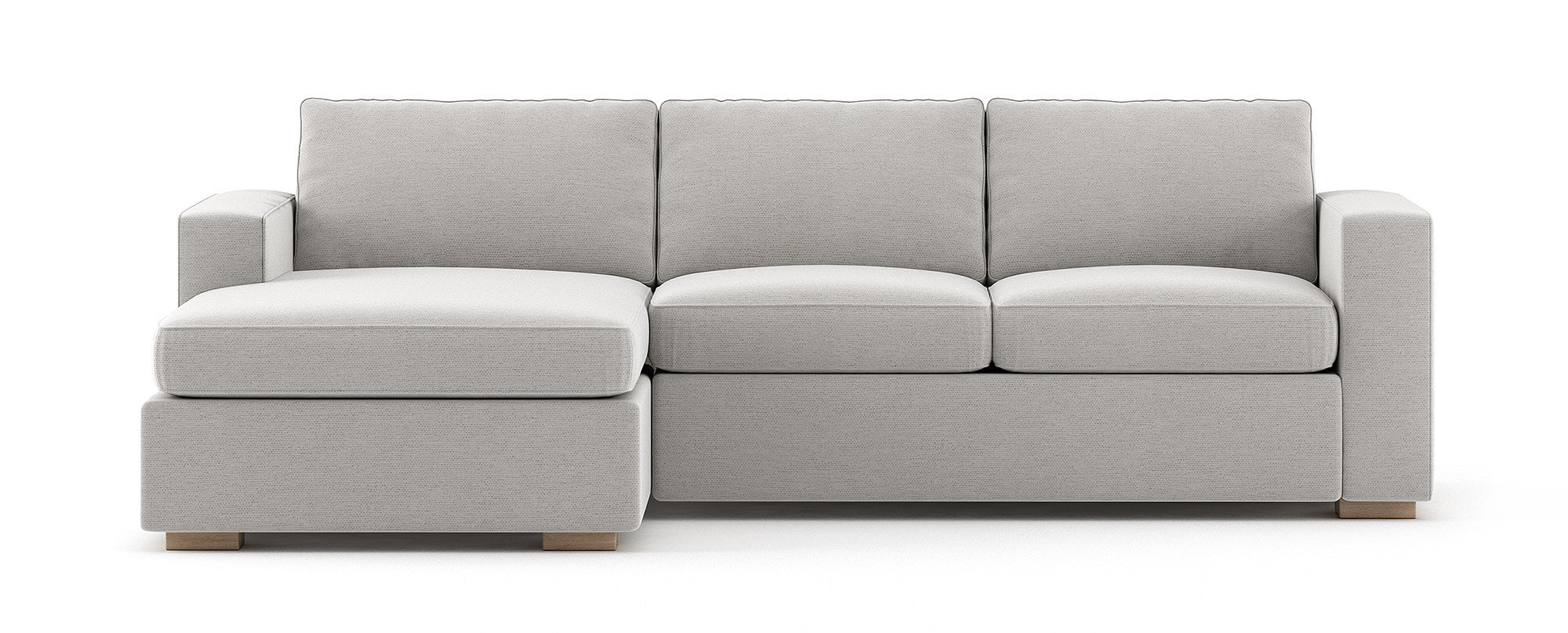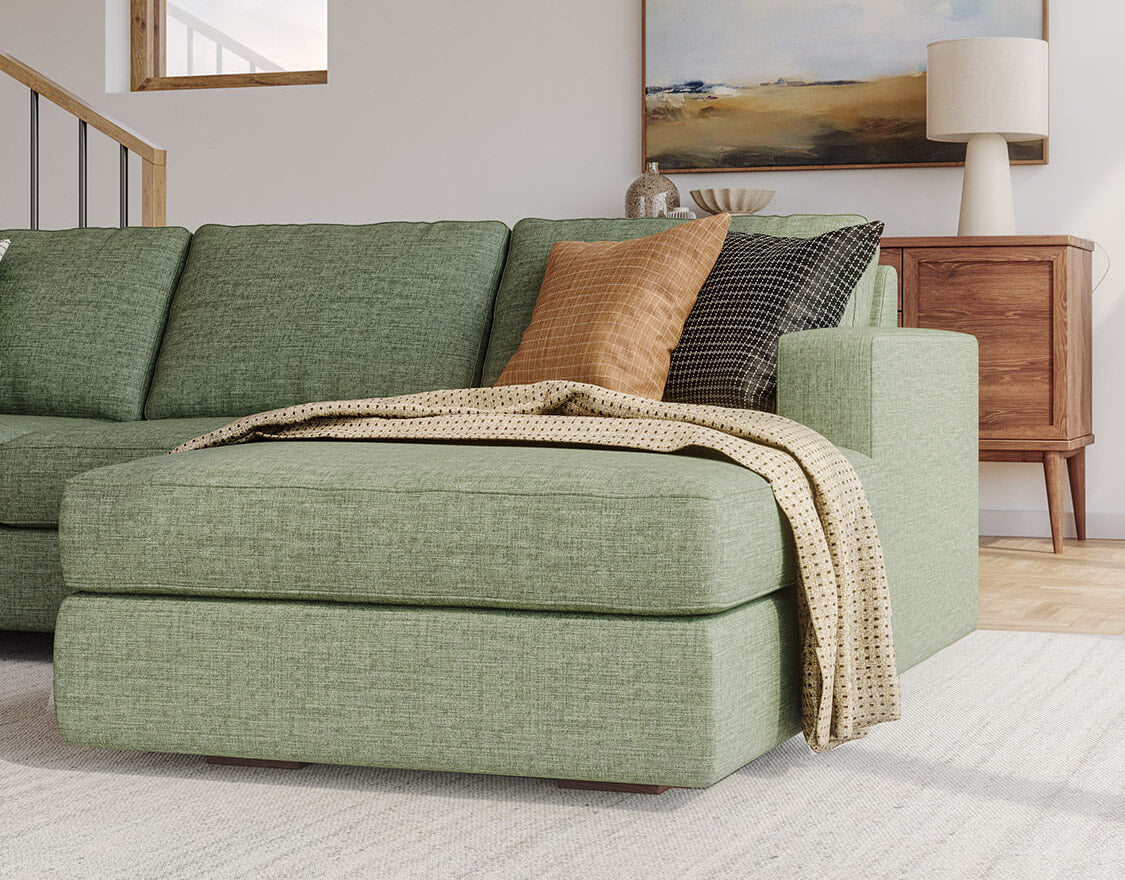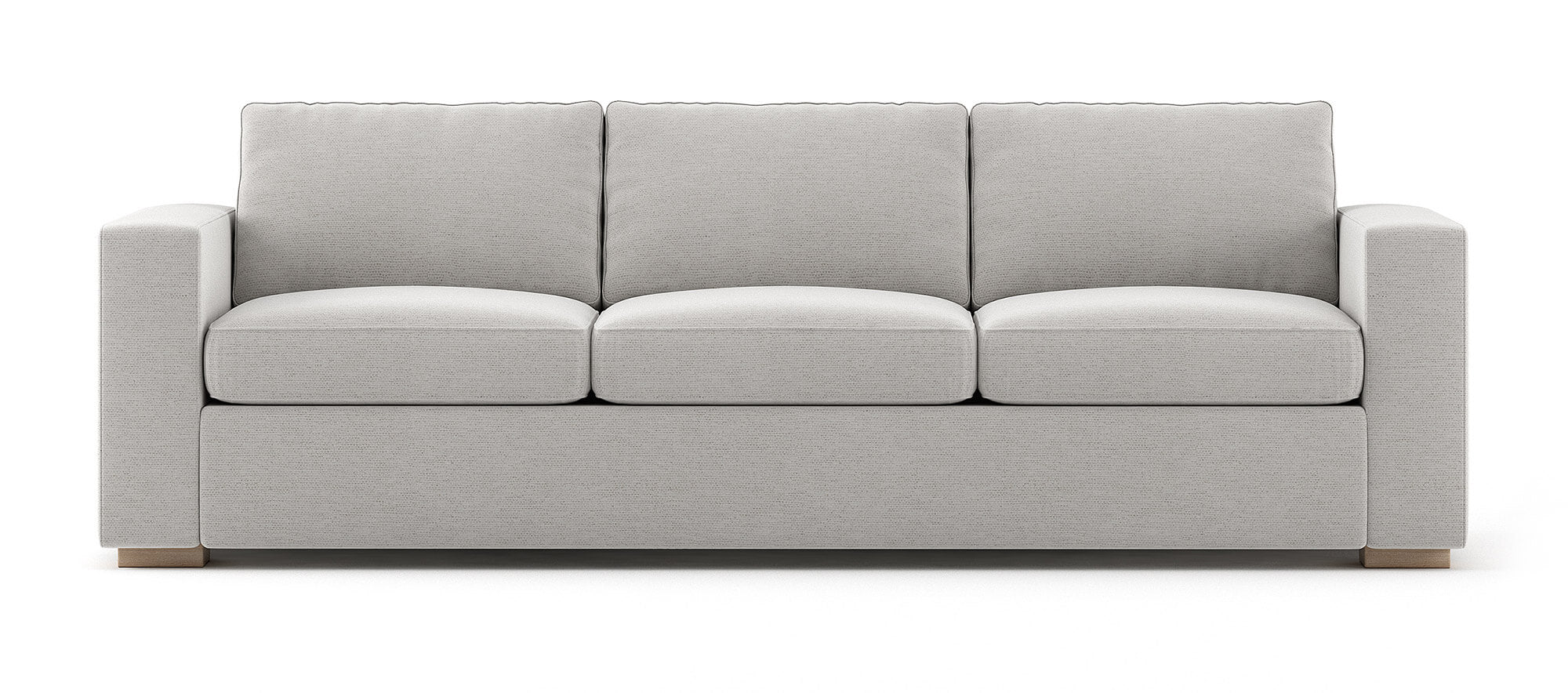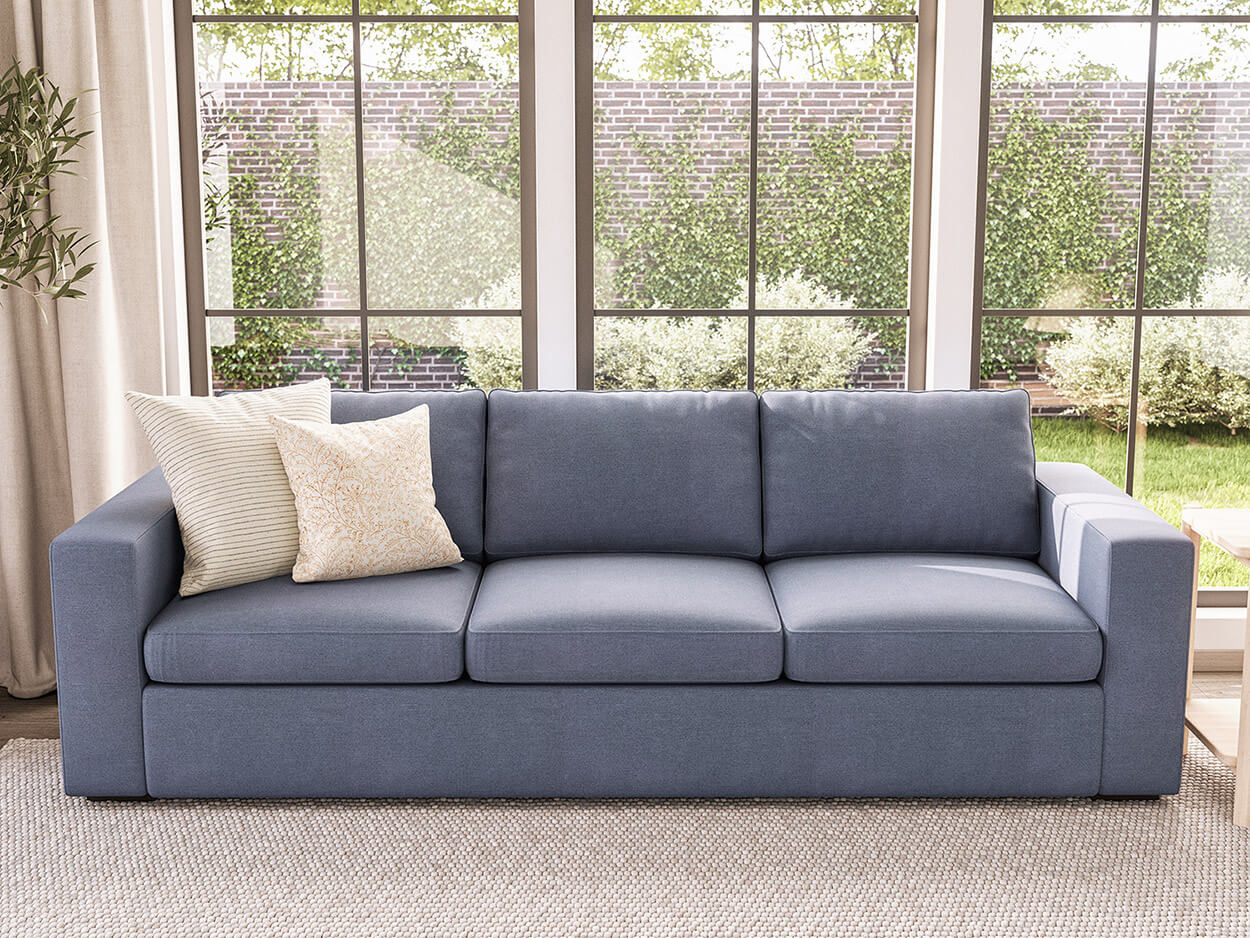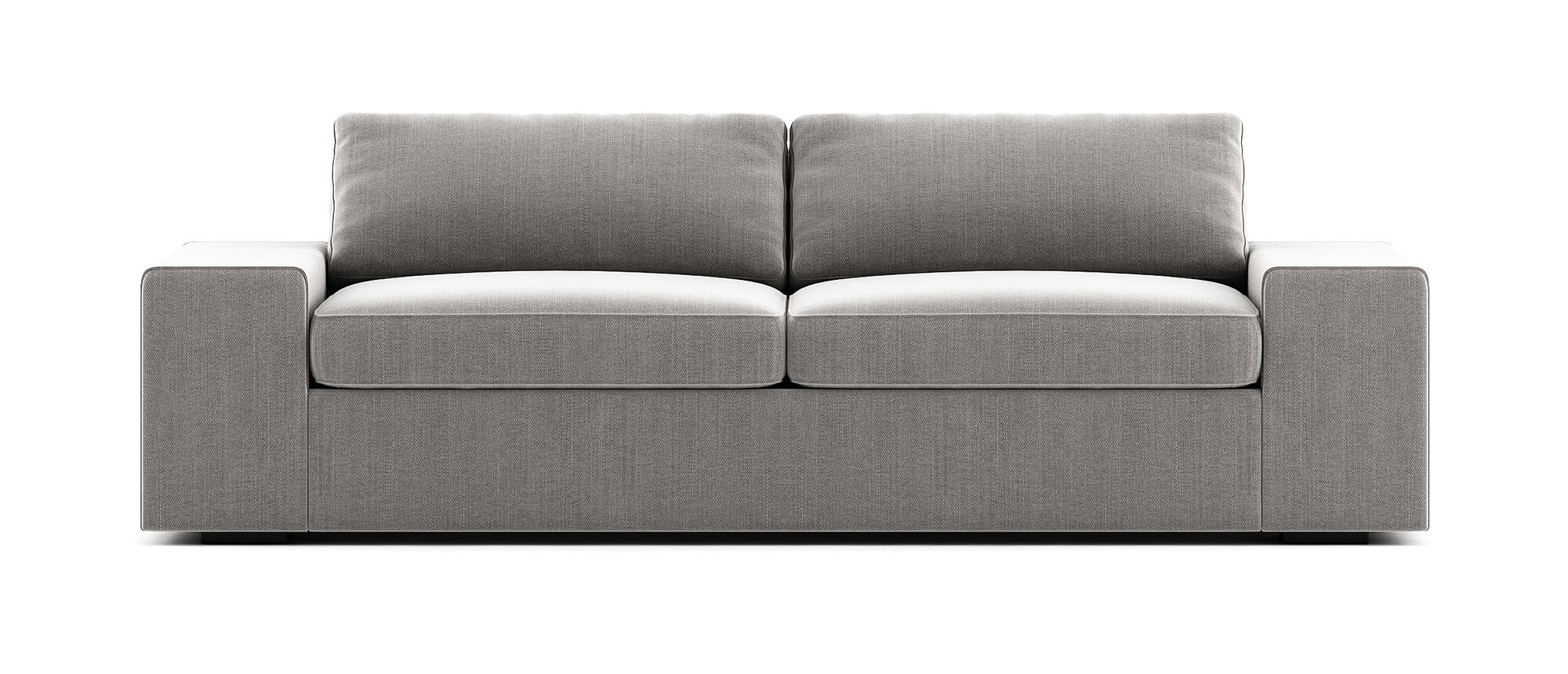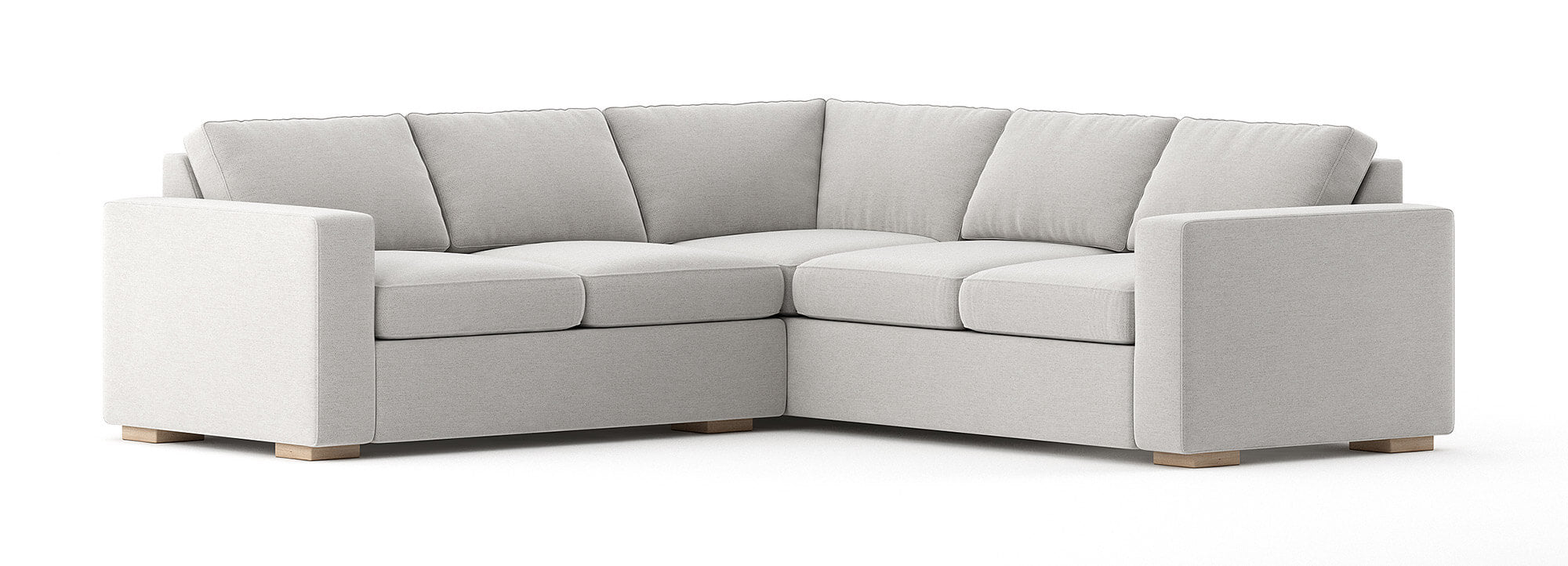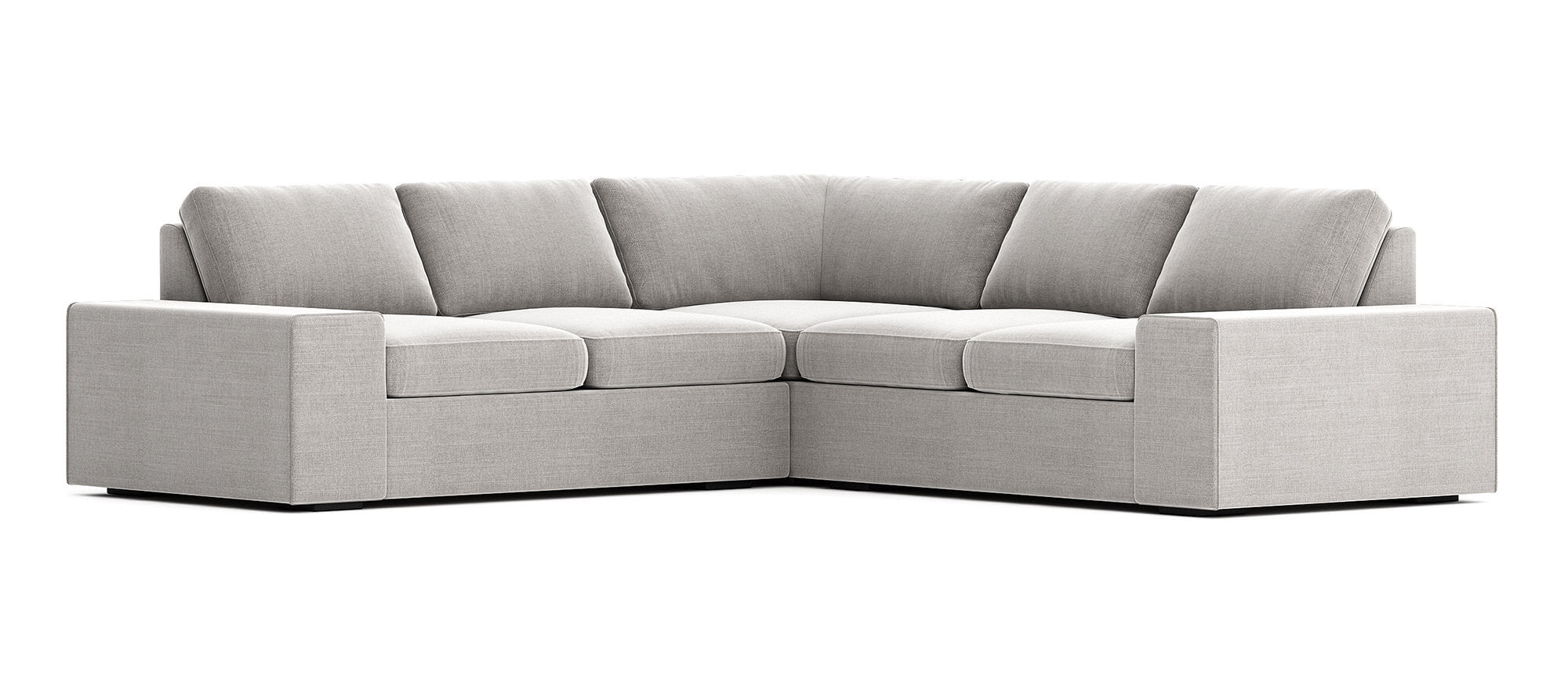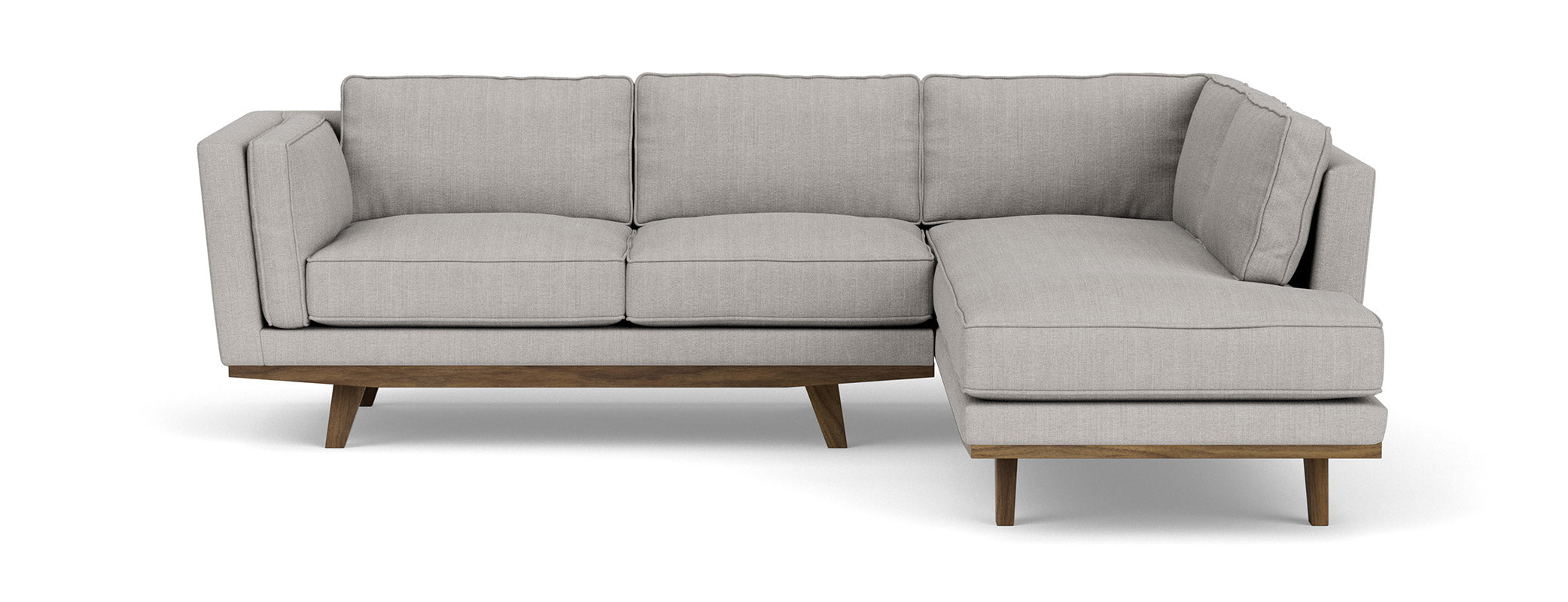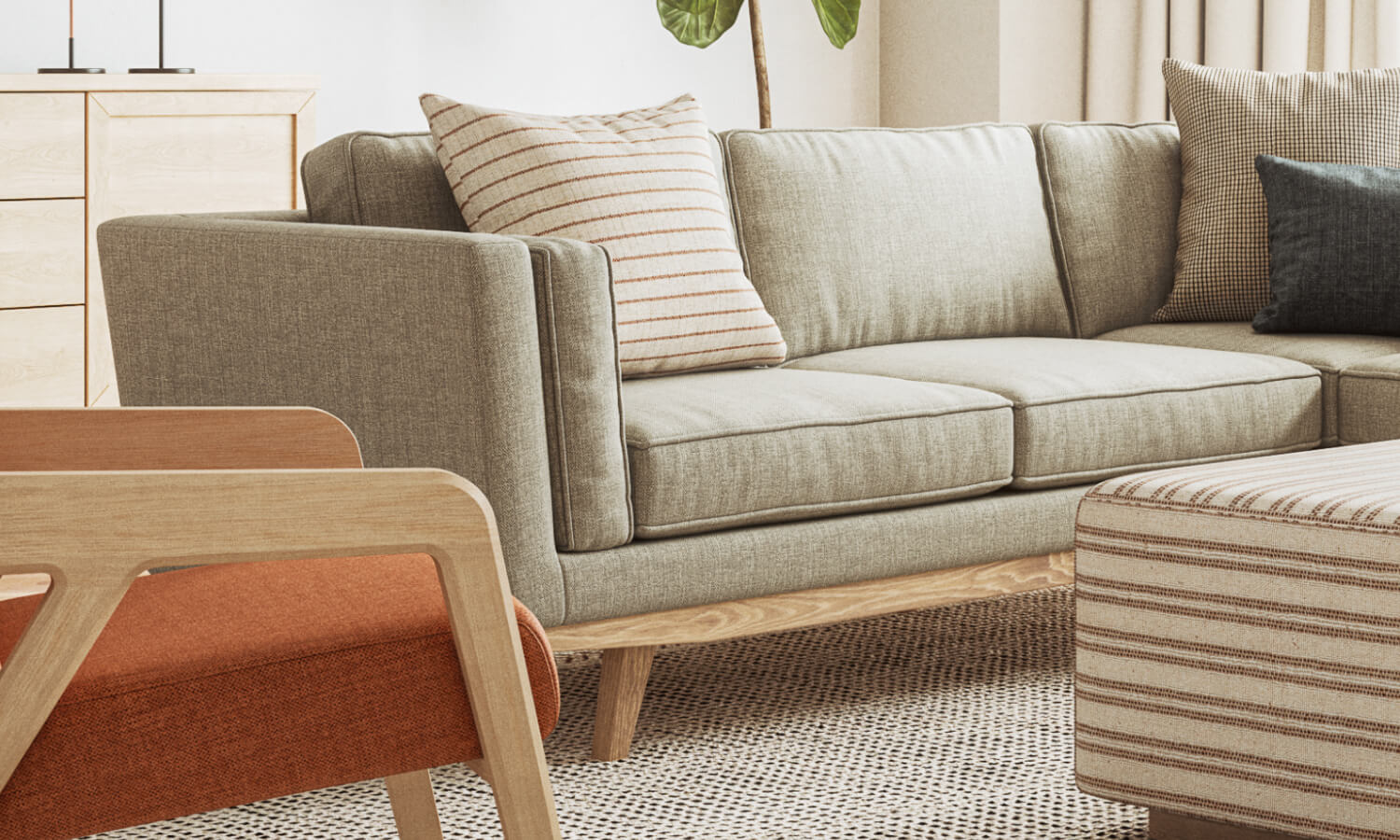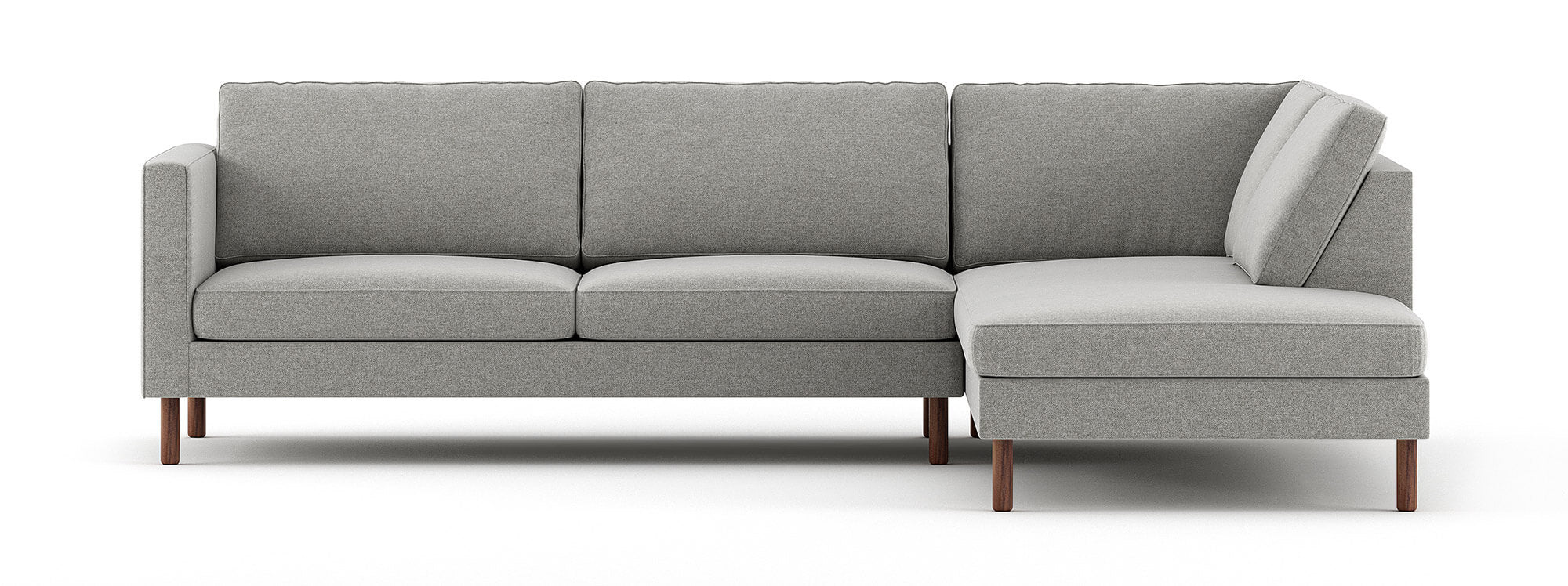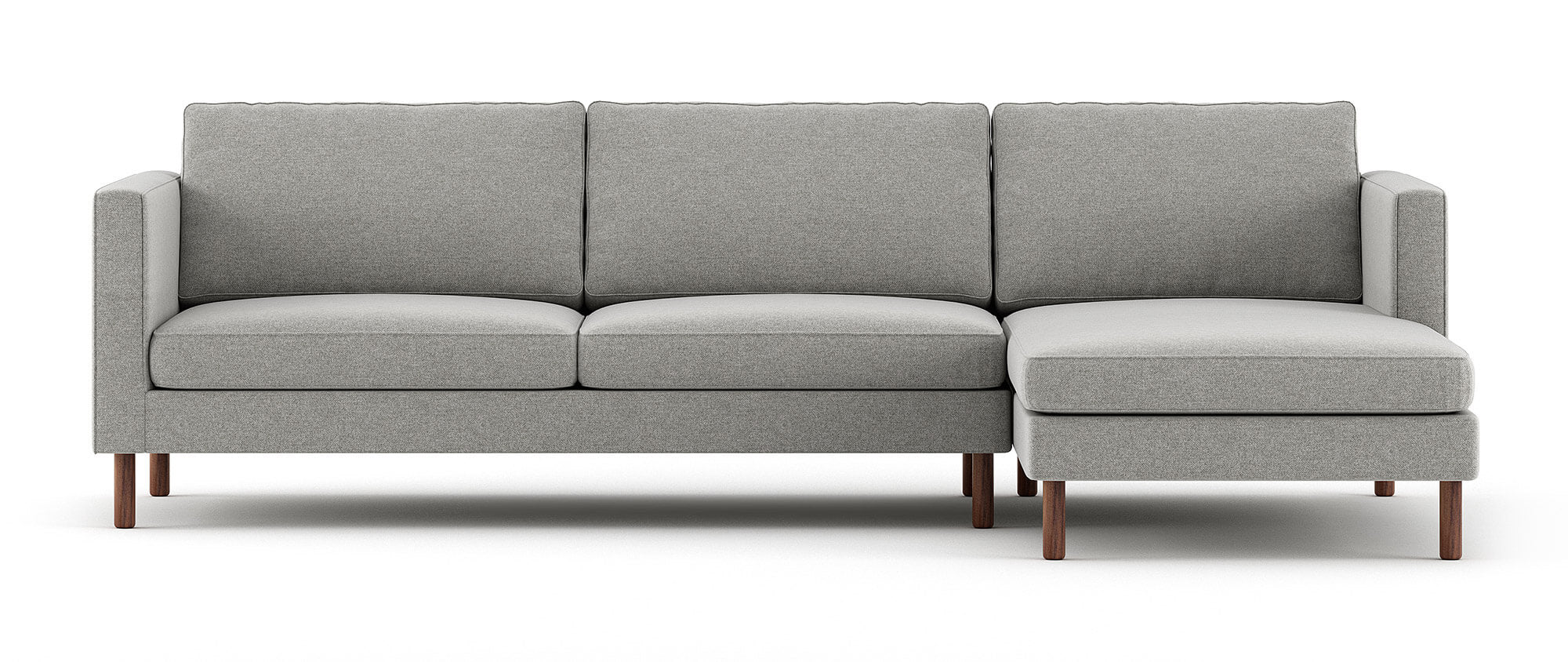
Pictured: Kaydan Chair in Latex + Wool
Maybe you eat organic food or use natural cleaning products at home. If you've thought about embracing more sustainable, natural materials in your home decor, too, then you'll want to know about natural latex!
Natural latex foam is an ultra comfy, plant-based cushion filling that we're proud to offer in our sofas, sectionals, and other upholstered furniture (including mattresses). All in all, it's one of the most durable, eco-friendly, resilient materials available for foam—and a wonderful alternative to standard synthetic, petroleum-derived cushion foams on the market. Below we've pulled together its key features.
{{ theme_section_1 }}
Learn the difference: natural vs. synthetic latex
We know: "latex" sounds plasticky. And here's why: latex is a substance harvested from the sap of rubber trees (Hevea Brasiliensis), but can also be artificially produced via chemical processes. This means the material can refer to synthetic latex (rubber gloves at the doctor's office) or natural latex (plant-based and the kind we use in our furniture). There are a few different types of latex, and if you’re looking for the most natural option, it’s important to understand what to weed out.
Natural latex is made from rubber tree sap and does not typically involve added fillers like blended or synthetic latex does.
Synthetic latex is manufactured by mixing natural latex from rubber trees with a petroleum-based plasticizer. Typically, butadiene or styrene is used as the mixing agent. As a result of the added chemicals, synthetic latex is not considered organic.
Blended latex is made by combining synthetic and organic latex and may also contain other fillers, such as clay.
To make sure you’re opting for organic latex, look for a Global Organic Latex Standard (GOLS) certification. Without it, it’s hard to prove whether the latex is certified organic rather than mixed with fillers or synthetics. Despite this, note that not even "natural latex" is 100% natural, as processing chemicals must be used to create natural latex foam. Read our "More on Medley's certified organic latex" paragraph for a detailed explanation.
How natural latex is harvested
 Harvesting latex is simple and typically requires no harsh chemicals, fertilizers or pesticides. It takes about seven to ten years of growth before rubber trees start producing sufficient amounts of latex, a waiting period that ensures new rubber trees are planted continuously.
Harvesting latex is simple and typically requires no harsh chemicals, fertilizers or pesticides. It takes about seven to ten years of growth before rubber trees start producing sufficient amounts of latex, a waiting period that ensures new rubber trees are planted continuously.
Latex is harvested from rubber trees by "tapping" them, similar to maple syrup. Careful stripping of the rubber tree’s bark allows the sap to be harvested without damage, allowing the latex to flow out and into a container attached to the tree.

After about 25 years, rubber trees stop producing the sap needed to make latex and are sometimes harvested for wood. Since the wood resembles teak, the wood is often used to make furniture, and is also commonly used in timber and beam construction.
If natural latex ends up in a landfill, it'll break down without harming the environment to the degree that a traditional sofa cushion made from synthetic poly foam would.
Latex foam delivers ultra soft, supportive comfort
Latex foam strikes a balance that's dense yet soft and slightly springy. Overall, it makes for a plush, supportive, and incredibly comfy lounge. At Medley we wrap every latex cushion in an envelope of cushy wool fiber for extra softness and squish; we also pad sofa arms and backs with latex for all-over comfort.
Latex makes a wonderful material to sleep on, too: its rubber properties allow the material to contour to your body, offering responsive, gentle, and pressure-free support. It also naturally absorbs motion, setting you up for a smooth, bounce-free snooze (another reason why natural latex mattresses knock it out of the park).

Pictured: Medley's Certified Organic Natural Latex Mattress
Natural latex is inherently resilient
Natural latex foam's inherent spring-back properties means that it resists impressions from use over time and can maintain its shape for 20+ years. It's also naturally resistant to mold, mildew, and dust mites and, unlike many other types of foam, does not absorb moisture or heat. All this means natural latex foam stands up to wear and tear better than conventional poly or memory foams, and that a latex mattress or cushions are the most likely to resist sagging.
More on Medley's certified organic latex
Medley’s latex is certified organic by the Global Organic Latex Standard (GOLS), the gold standard of the industry that indicates purity of material, fair labor practices, and eco-friendly processing.
To label latex as GOLS certified, it must contain a minimum of 95% certified organic raw material of the total weight (raw materials in the product must comply with the requirements on organic origin). In our case, the 5% left over accounts for approved, essential processing chemicals required for any manufacturer to make latex foam suitable for home furnishings.
Note: 100% natural latex isn't possible, as processing chemicals are necessary to create natural latex foam. Our latex is certified 100% natural, but the final latex baked cores consist of 3-5% non-natural processing chemicals. These additives are mostly comprised of sulfur and zinc oxide, which help initiate vulcanization (turn latex from a liquid to a solid via heat) and protect latex from early oxidation.
Let’s get nerdy: Dunlop vs. Talalay latex
The process to create natural latex is made in one of two ways: Dunlop or Talalay. The biggest difference between the two is that Dunlop latex is more durable and long-lasting. Now for the detailed differences between Dunlop and Talalay processing, if you’re up for it:
The Dunlop process:
- Liquid latex extract is whipped into a frothy foam.
- The mixture is then poured into a mold and transferred to a vulcanization oven. To give latex its final shape, the vulcanization process engages sulphur, an agent that helps initiate the vulcanization, and zinc oxide, which helps prevent the foam from oxidizing.
- The latex is then washed, which helps retain elasticity and counter aging.
The Talalay process:
- Liquid latex extract is whipped into a frothy foam.
- Liquid rubber extract is inserted into a closed mold that is vacuum-sealed.
- The mold is then frozen to permit stabilization of the latex.
- Carbon dioxide gas is then added.
- The mold is baked to cure the rubber.
- Once vulcanization has occurred, the latex is de-molded and sent for washing and drying.
The takeaway
When you opt for a natural latex sofa, you need to worry less about harsh chemicals or high levels of off gassing than you would with a traditional synthetic cushion filling made from poly foam. Plant-based latex foam is more eco-friendly, durable, and sustainable when it's GOLS-certified. And yes, it is c-o-m-f-y: once you've experienced sleeping or lounging on organic latex foam, there's no going back.
Shop Natural Latex Sofas
Shop Natural Latex Mattresses

Pictured: Rio Sofa in Natural Latex and Wool


